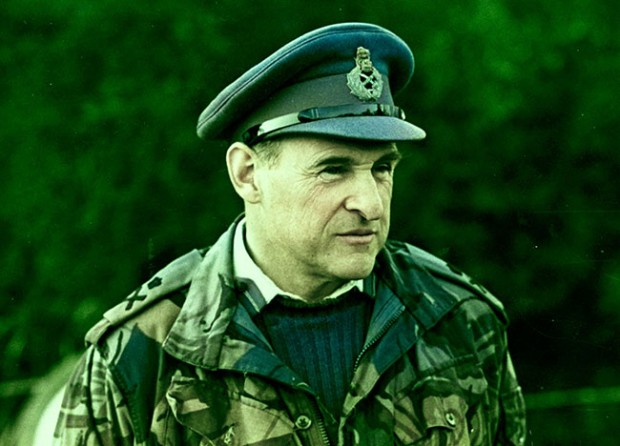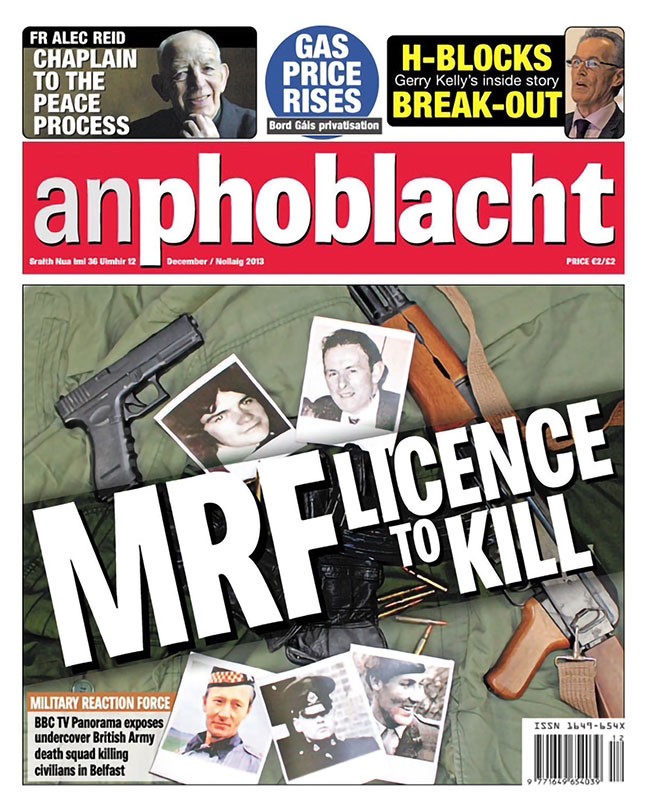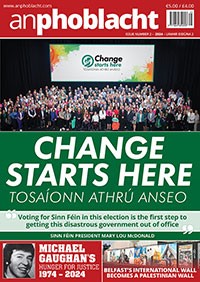29 February 2024 Edition
Kitson’s legacy of murder and collusion

• General Frank Kitson
The recent death of former British Army officer General Frank Kitson prompted a series of obituaries, and in some cases eulogies. Two words cross these accounts of Kitson’s life – ‘controversial’ and ‘notorious’.
Kitson was both these things and much more. He was also rewarded and promoted because of them. Innocent nationalists across the Six Counties died because of them in three decades of the conflict. Kitson was given medals and a knighthood because of actions such as the massacres of Bloody Sunday and Ballymurphy. Kitson received a CBE in 1972 for his ‘gallantry’ in Six Counties.
In 1982, he was promoted to Commander-in-Chief Land Forces, another reward from the British state that had no issues with his controversial and notorious tactics, that accepted state-sanctioned murder as an operational norm in Ireland.
Kitson’s strategies and tactics became central to Britain’s military operations in Ireland from 1969 when British soldiers were first redeployed on the streets.
Kitson was central to Britain’s counterinsurgency, using regiments like the Paratroopers to terrorise the nationalist and republican communities of the Six Counties.
Alongside this, Kitson’s covert counterinsurgency strategies earned him more notoriety. He established the Military Reaction Force (MRF) as a prototype counterinsurgency gang, incorporated the loyalist death squads into the British military framework, and employed Britain’s intelligence services in the fight to defeat republican resistance.

At the time of his death, Kitson was being sued by the family of Patrick Heenan, killed in 1973 by a UDA gang led by Albert ‘Ginger’ Baker. A British soldier, Baker received specialist training in covert warfare by both US Special forces and the SAS and was operating as part of Kitson’s doctrine, the 'pacification' of Ireland.
From the Falls Curfew of 1970, the introduction of interment in ‘71, McGurk’s Bar Bombing in December ‘71, Bloody Sunday, and the Springhill Massacre of July ’72, through to the undercover operations of the Force Research Unit and ongoing collusion, the sinews of Kitson’s Low-Intensity Operations are the strategic framework within which British political policy was formed.

• General Mike Jackson
General Mike Jackson, also involved in Bloody Sunday wrote of Kitson that he “was the sun around which the planets revolved and very much set the tone for the operational style” in the North. Jackson was revealing the centrality of Britain’s ‘dirty war’ in the North.
Kitson’s tactics in Ireland had been also used by him in Kenya, during the Mau Mau uprising, and in Malaya and Cyprus.
Final words here go to Tony Doherty, Chair of the Bloody Sunday Trust. In a widely reported statement, he said, “There will be no sadness at the passing of Frank Kitson in Derry, Ballymurphy or in any other community where he plied his evil trade, leaving a trail of devastation behind. Kitson, in his blind pursuit of defending the crown’s interests, made no distinction between civilian and combatant as he honed his skills in applying torture, internment and death from Kenya to Aden and then to Ireland”.




